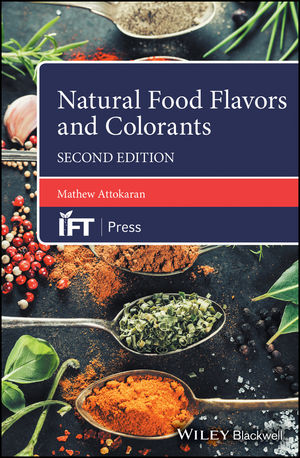Candy Industry Senior Editor Liz Parker recently touched base with Pablo Elizondo, color specialist and flavor technologist, CAPOL, about colorings for candy, and some tips on choosing the right formulation for your brand.
Liz Parker: How do CAPOL’s food chemists work to find the right pH of solutions to safely change color, while not impacting overall flavor profile of treats?
Pablo Elizondo: The first step in safely developing the right solutions to achieve the right hue and corresponding desired pigment is to understand the production process for the candy. The more a customer can tell us on the front end about their process for developing the candy, the better. Parameters such as the temperature used, the ingredients of the candy, and its exposure to light through the packaging, will all play a role in determining what raw materials will achieve the desired color at that pH level.
At CAPOL, a business division of Freudenberg dedicated to finishing solutions in the confectionery industry, developing natural color pigments has been a cornerstone of our business model. However, some natural colors are more impacted by pH than others. Within the colors most affected are anthocyanins—otherwise known as colorful antioxidants that give many fruits and vegetables their color profile. At different pH levels, the anthocyanins can take on many different colors. So, once we identify the desired color, we use our patented encapsulation process to “freeze” the anthocyanins at the desired shade and help stabilize them from further changes in color. We’ve effectively used our expertise to invent formulas for every shade in the color spectrum. For example, we have used our understanding of anthocyanin reactions to pH to achieve vibrant pinks from a red radish and nice shades of blue and purple from red cabbage—and we remain committed to testing and innovating with other natural alternatives as more consumers seek to eat clean.
Throughout this process, we don’t have to worry about the taste of cabbage or other raw vegetables being infused into the candy. This is because the raw materials we are working with are deodorized. The color material is extracted as much as possible from the rest of the vegetable itself, leaving behind flavor compounds.
LP: Can you talk about CAPOl's white pigment alternative, which is currently being tested with customers?
PE: For years, titanium dioxide has been the go-to whitening agent for foods. However, the product safety of titanium dioxide has been increasingly questioned over the past several years. In August 2022, the European Union banned titanium dioxide as a food additive, and despite the reversal of the carcinogenic status of TiO2 in late 2022 by the EU Court of Justice, consumers have now been made aware of this ingredient, and are actively avoiding it.
Understanding the concerns, CAPOL has been working on developing a natural whitening agent that would serve as an effective alternative to titanium dioxide. Our solution is known as VIVAPIGMENTS White. It is based on calcium carbonate encapsulated with rice protein through our patented process to provide excellent opacity. Our solution, however, was not without its own set of challenges. Those familiar with calcium carbonate know that it too has some limitations. For instance, when added to a low pH, it can cause significant foaming in formulations. After years of testing and experimenting, we managed to reduce this reaction with acid while giving it extra opacity.
Today, our white pigment is commercialized and available to customers. The response has been overwhelmingly positive as candy manufacturers have struggled to find an efficient and effective natural alternative to white coloring, in particular, when it comes to hard sugar panning. We suspect that as more consumers become conscious of nutritional labels and continue to seek healthier options, we’ll see more demand for products such as VIVAPIGMENTS White.
LP: How can manufacturers develop glazing agents for chocolates using natural and renewable raw materials? How can these help them retain shape, flavor, and appearance?
PE: As a whole, the industry is making positive strides in the development of natural and renewable raw materials, and we at CAPOL are proud to be leading the pack. The ability to continue to move the industry forward to discover healthy alternatives largely depends on the regulatory environment and the ability to invest in innovations. The food industry—and candy manufacturers—must adhere to regional rules and regulations, provided by agencies such as the FDA or European Food Safety Agency, depending on where their products are sold. These agencies provide a list of ingredients that have gone through rigorous testing to be certified as safe for consumption. In order for this list of natural approved ingredients to grow and provide manufacturers with more options for glazing agents, increased communication between manufacturers and regulators is necessary.
So, what can the industry as a whole do in the meantime? For us, the answer is simply seeking out more sustainable options. Right from formulation development and selecting our raw materials and suppliers, we are focused on making ethically responsible decisions when choosing our raw materials. We are also cognizant of finding new ways to improve our processes to make them more environmentally friendly as well.
This commitment to sustainable operations has certainly proven successful for us. Candy products can retain their shape and surface thanks to our water-based formulations—including natural raw materials such as gum Arabic from acacia trees. With this, we’re able to protect the surface of the product from moisture that could pose a threat to its physical appearance, while creating a nice shine.
Developing these formulations is crucial, and we look to balance and prioritize the end result for the consumer and, at the same time, satisfy the requirements from chocolate manufacturers, achieving a high-quality chocolate while also achieving an optimal cost-benefit factor. We also ensure we’re keeping up with current market trends and navigate our way through those with all sorts of customer lifestyles and sentiments in mind—for example, offering sugar-free or vegan options.
LP: What’s the best process for developing natural colors found in sweets? How has CAPOL’s team approached finding alternative options for pigments?
PE: As mentioned, companies can only use a color additive in their formulation if it's explicitly allowed through legislation in various countries, so, this sets the parameters to what we can use. Therefore, our team is constantly looking at updates to various regulations to see what parameters exist that we can experiment within. We also look at what products are going to be hitting the market. We want to become familiar with them in advance to best guide our customers on these developing trends and how they may—or may not—impact their products. If, for example, there is a brand-new natural extract that people are starting to offer, we’ll get our hands on it and experiment with it.
When working with a new client or product, we routinely check what ingredients are accepted and work to mix base pigments to create custom blends that will give the desired hue. Our customers come to us because we have found a niche in the color industry by using natural dyes to develop natural pigments. The opacity and fat dispersibility of our pigments makes for a unique product. Due to this expertise, we can often tackle projects where natural colors had been unable to replace artificial aluminum lakes.














